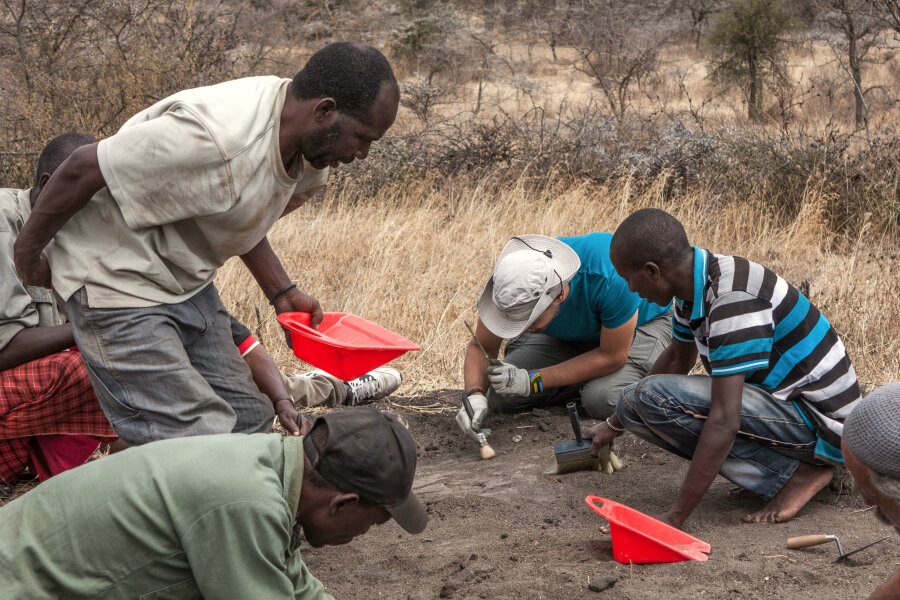How much can we learn about a human ancestor from one footprint?
Loading...
You remember “Lucy.” Meet her colleague. Or her mate?
A set of footprints uncovered in 2015 by Tanzanian archeologists at the renowned northern Tanzanian site of Laetoli, and later analyzed with the help of a team of Italian scientists, has been found to belong to members of the same pre-human species as the fossil skeleton known as Lucy, or the Australopithecus afarensis species. The team’s results were published on Wednesday in the journal eLife.
The 13 footprints, made on volcanic ash that later hardened into rock, were found among another 70 tracks discovered back in 1978 by paleontologist Mary Leakey, notes National Geographic, and together, the tracks are the oldest of their kind.
Scientists have drawn a number of conclusions from the footprints, underscoring their usefulness in revealing biological characteristics.
One of the two individuals responsible for the new tracks – called S1, after the first discovery made at the “S” site – is the tallest known member of Lucy's species at 5-foot, 5-inches and around 100 pounds.
The team that authored the report says S1 would have stood out from his group, standing at least 8 inches taller than the individuals who made the other tracks and probably 3 inches taller than another large member of the species found earlier in Ethiopia.
“The tall individual may have been the dominant male of a larger group, the others smaller females and juveniles,” wrote the researchers. “Thus, considerable differences may have existed between males and females in these remote human ancestors, similar to modern gorillas.”
That could mean that similar to modern gorillas, A. afarensis could have had a social arrangement in which one dominant male lived with a group of females and their offspring, they say.
“It’s not new in the sense of ‘A-ha!’ ” Briana Pobiner of the Smithsonian Institution’s Human Origins Program, who wasn’t involved with the study, told National Geographic. “But it is interesting that one of the individuals does seem to be a larger male than had been represented in the Laetoli sample.”
Other scientists disagree: William Jungers, an anthropologist and research associate at the Association Vahatra in Madagascar who wrote a commentary on the study, told the Associated Press in an email that scientists had not recovered enough data to accurately estimate S1’s height. And Philip Reno, an assistant anthropology professor at Pennsylvania State University who was not involved in the study, said he was unconvinced that S1 was taller than the other large Ethiopian A. afarensis.
The new report comes a few months after other scientists asserted that Lucy died after falling out of a tree, as The Christian Science Monitor’s Eva Botkin-Kowacki reported:
The forensic evidence lies directly in Lucy's bones. A team led by Dr. Kappelman used CT scans to examine every bump and crack in her bones in an effort to reconstruct the individual hominin's life – and death.
The researchers compared breaks in Lucy's bones with the injuries sustained by humans today and found that "a number of fractures are consistent with the sorts of injuries seen in patients who have suffered a fall from a considerable height," Kappelman says.
Given that there were no skyscrapers to fall off, and Lucy's skeleton was unearthed far from any steep cliffs, Kappelman and his colleagues hypothesized that Lucy had been in a tree just before plummeting to her death.
This report contains material from the Associated Press.






